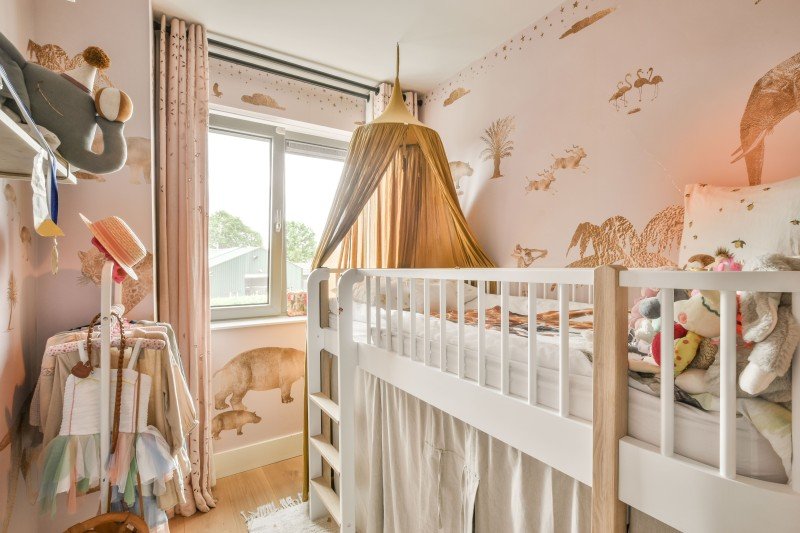Exploring Bunk Beds: A Comprehensive Guide
Bunk beds have long been a staple in children's bedrooms, dorms, and even homes with limited space. Not only do they provide a useful sleeping option, however they likewise produce an enjoyable and creative environment for children and a great space-saver for adults and households. This short article will check out whatever you require to know about bunk beds, from types and materials to security pointers and buying recommendations.
Table of Contents
- Types of Bunk Beds
- Conventional Bunk Beds
- Loft Beds
- Triple Bunk Beds
- L-Shaped Bunk Beds
- Product Options
- Wood
- Metal
- Security Considerations
- Buying Guide
- FAQs
Kinds Of Bunk Beds
Bunk beds are available in various styles to fit different needs and preferences. Here's a breakdown of the most common types:
Conventional Bunk Beds
Standard bunks usually feature 2 beds stacked vertically on top of one another. These beds are perfect for brother or sisters sharing a space or for taking full advantage of sleeping space in visitor spaces.
Loft Beds
Loft beds stand similarly to conventional bunk beds however do not have a lower sleeping location. Rather, they frequently integrate a desk or seating location beneath, making them a great option for small rooms needing multifunctionality.
Triple Bunk Beds
Triple bunk beds are developed for 3 occupants, with beds stacked in a three-tier configuration. These are less typical but can be a fun service for big families or slumber parties.
L-Shaped Bunk Beds
With one bed positioned horizontally and the other vertically, L-shaped bunk beds are typically equipped with extra functions such as desks or storage drawers and can match corner spaces in a space.
Contrast of Bunk Bed Types
| Bed Type | Suitable Use | Description |
|---|---|---|
| Conventional | Shared bed rooms or visitor spaces | 2 beds stacked vertically |
| Loft | Small rooms needing multi-purpose space | Upper bed with open space underneath |
| Triple | Big households or pajama parties | 3 beds stacked vertically |
| L-Shaped | Corner or flexible spaces | A combination of vertical and horizontal beds |
Material Options
Bunk beds are manufactured from various products, with wood and metal being the most common. Each material has its advantages and disadvantages.
Wood
- Resilience: Generally robust and can hold up against years of usage.
- Aesthetic Appeal: Offers a traditional appearance that can blend with various decors.
- Weight Capacity: Typically sturdier; can support heavier weights.
- Downsides: May be more costly than metal options and can be susceptible to scratches.
Metal
- Toughness: Generally lightweight and simple to move however still tough.
- Modern Design: Often comes in smooth designs, making it appealing for contemporary spaces.
- Economical: Usually less costly than wooden alternatives.
- Drawbacks: Can be cold to the touch in winter seasons and may not have the same visual appeal for some buyers.
Security Considerations
When it pertains to bunk beds, safety can not be neglected. Here are essential safety pointers to keep in mind:
- Guardrails: Ensure that the leading bunk has guardrails on both sides to prevent falls.
- Sturdy Construction: Check for a solid construct and sturdy products to hold up against weight and movement.
- Weight Limit: Adhere to the manufacturer's weight limit for both the upper and lower bunks.
- Ladder Design: Choose bunks with a safe, easy-to-climb ladder and prevent any sharp edges or rungs.
- Age Restrictions: Most producers advise that kids under the age of six should not sleep in the upper bunk.
Buying Guide
When looking for bunk beds, consider the list below factors to discover the very best suitable for your requirements:
- Space Availability: Measure the room size and ceiling height, making sure there is appropriate space for the leading bunk.
- Bed Size: Decide between twin, complete, or bigger sizes based upon your requirements and the size of the room.
- Design Preference: Consider the general decoration of the bed room to find an ideal design.
- Reduce of Setup: Look for a bunk bed that is uncomplicated to put together.
- Budget: Bunk beds are available in numerous cost ranges, so identify a budget plan before starting your search.
FAQs
1. What is the recommended age for kids to sleep on the top bunk?
Kids aged six and older are usually suggested to sleep on the leading bunk to decrease the risk of falls.
2. How can I make my bunk bed safer?
To boost safety, ensure guardrails are properly installed and check that the bed is put on a flat surface area. Additionally, motivate kids to utilize the ladder thoroughly.
3. Can Bunk Bed For Kids xavierhewitt.top convert a bunk bed into 2 separate beds?
Lots of bunk beds are created to be convertible. Inspect the manufacturer's requirements for convertibility functions.
4. What devices are offered for bunk beds?
Typical devices consist of beddings, storage drawers, staircases instead of ladders, and tented canopies for an enjoyable visual appeal.
5. How do I preserve my bunk bed?
Regular checks for loose screws or structural integrity can help guarantee security. Dust the bed regularly and tidy spills immediately to keep the products in good condition.
Bunk beds are versatile and a space-efficient solution for various living scenarios, from children's rooms to guest lodgings. With many designs and products available, possible buyers have a wealth of choices to think about, making sure a mix of usefulness and visual appeals. By focusing on safety and following the ideas detailed in this guide, individuals can find the ideal bunk bed that suits their space and way of life, all while developing a satisfying sleeping environment.

